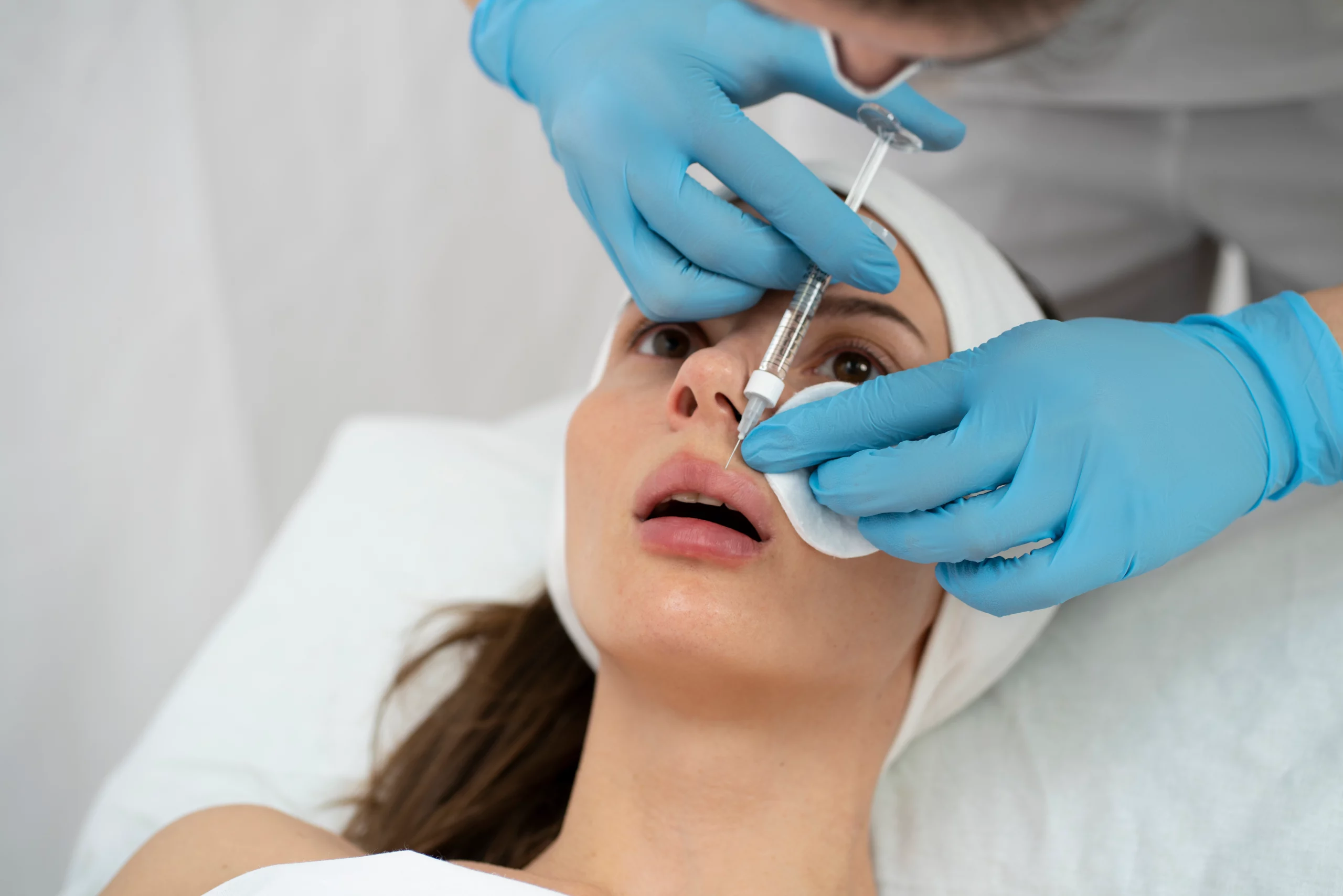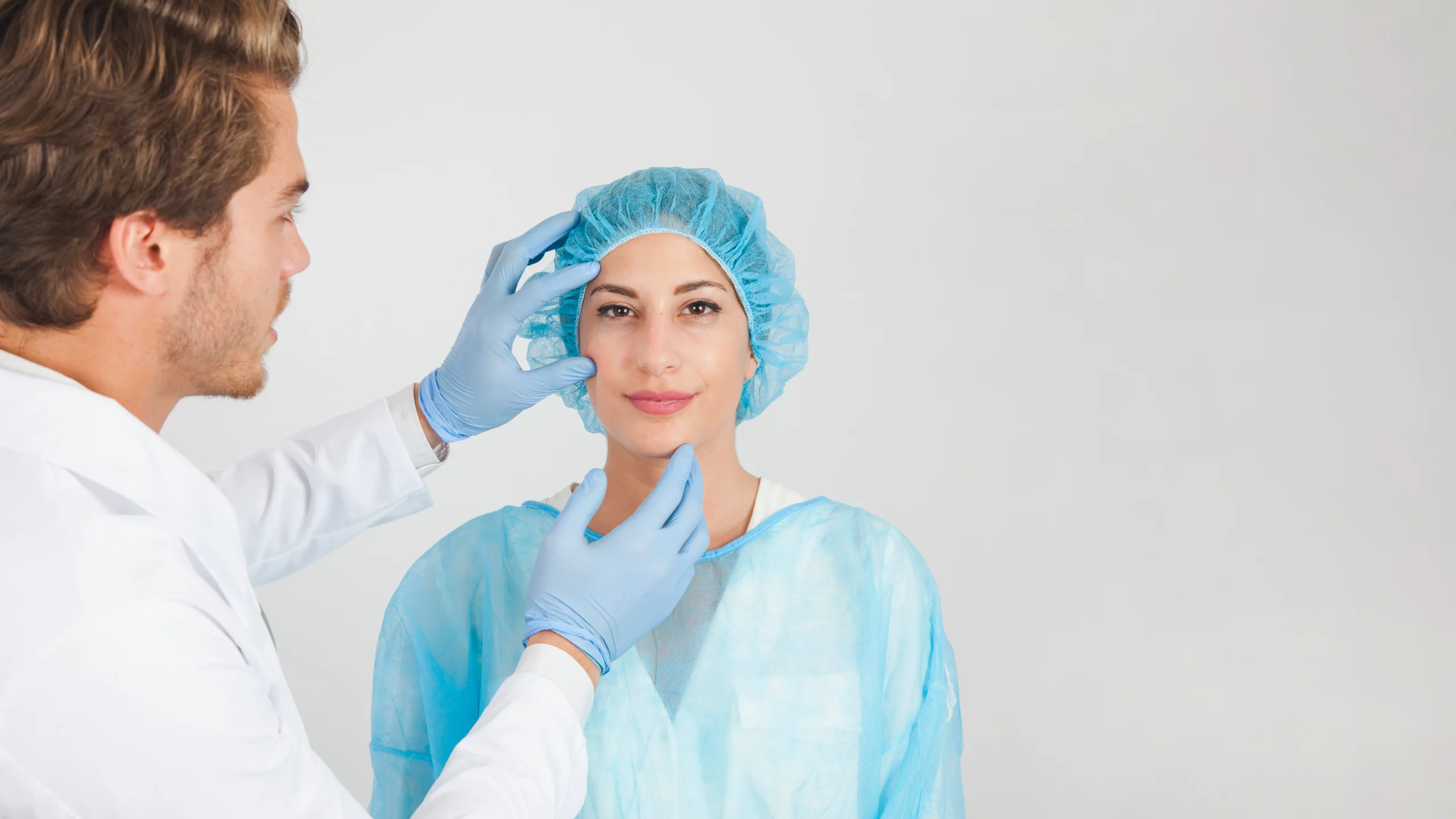This article aims to shed light on Revolax fillers’ potential side effects and offers guidance on managing them effectively. Read on to stay informed and safe if you’re looking to buy Revolax wholesale or use it in your practice.
Revolax dermal fillers are popular in cosmetic procedures for enhancing facial features and smoothing wrinkles. Understanding why Revolax filler side effects happen is crucial for medical aestheticians. The composition of these products and the technique used during injection play significant roles in patient experiences post-treatment.
This article will cover common and rare side effects, offer insights into why these occur, and provide guidance on precautions and management strategies for medical professionals and clinics.
Key Takeaways
- Revolax fillers can cause swelling, bruising, and tenderness at the injection site, but these side effects usually go away in a week or two. Avoiding alcohol and blood thinners before treatment helps reduce risks.
- Rare complications like allergic reactions, lumps called granulomas, and blocked blood vessels can happen. Doctors need to know how to quickly deal with these issues.
- Patients should follow Revolax aftercare advice closely to speed up recovery. This includes not touching the treated area and avoiding extreme temperatures.
- Before using Revolax fillers, medical professionals need to check the patient’s health history and do a patch test for allergies. This step lowers the chance of bad reactions.
- Good communication between doctors and patients about what to expect and how to care for themselves after treatment is key. This helps manage any side effects properly.
What Are Revolax Dermal Fillers?
Revolax dermal fillers are a range of cosmetic injectable treatments designed to enhance facial aesthetics by adding volume, reducing wrinkles, and contouring facial features. Comprising high-purity, cross-linked hyaluronic acid, Revolax fillers are known for their smooth consistency and durability, providing natural-looking results.
These fillers are used in various facial areas, including lips, cheeks, nasolabial folds, and jawline, to address signs of ageing and improve facial harmony. The formulation of Revolax is designed to ensure even distribution within the skin, which helps achieve a more balanced and refined appearance.
A distinguishing feature of Revolax dermal fillers is their ability to integrate seamlessly with the skin, offering a high degree of elasticity and longevity. This integration helps maintain the skin’s natural expression and movement, reducing the risk of a stiff or unnatural look. The treatment is minimally invasive, with immediate results and minimal downtime, making it a popular choice for individuals seeking effective and convenient aesthetic enhancements. Additionally, the safety profile of Revolax, supported by rigorous testing and adherence to medical standards, ensures that patients receive reliable and high-quality care.
Medical professionals and clinics should buy Revolax wholesale only from reputable and safe sources like GlowHealth online shop.

Potential Side Effects of Revolax Fillers
Revolax fillers can cause common side effects such as swelling, bruising, redness, and tenderness at the injection site. These reactions are usually mild and clear up within a week or two. Patients might also experience soreness or stiffness in the treated area. To lessen these effects, it’s necessary to avoid alcohol and blood thinners before treatment.
Swelling and bruising are another common side effects after using Revolax dermal fillers. Patients often see these reactions right at the injection spot. This usually gets better on its own in a week or two.
Patients often report redness and tenderness at the injection site after receiving Revolax dermal fillers. This side effect is common and temporary, typically subsiding within a week or two.
Medical professionals should advise patients about these possible effects so they’re not caught off guard. It’s also crucial to follow best practices during injections to minimise these reactions.
Furthermore, patients may experience rare side effects of Revolax fillers which may include allergic reactions, granulomas, and vascular occlusion. These complications arise less often but pose greater risks to patients.
Allergic reactions may lead to swelling or discomfort beyond typical side effects. Granulomas are lumps that form when the body reacts to a foreign substance as a threat. Vascular occlusion happens when filler accidentally enters a blood vessel, blocking blood flow.
Medical professionals must recognise these signs early and know how to act swiftly to ensure patients’ safety and minimise the risk of long-term damage following Revolax dermal filler injections.
Insights into Revolax Filler Side Effects
Side effects from Revolax fillers, such as swelling, bruising, and soreness at the injection site, mainly stem from the filler’s composition and how it is injected.
Revolax fillers are made of a stable and consistent hyaluronic acid gel structure. This unique composition allows them to provide long-lasting results in cosmetic enhancements. Hyaluronic acid, a natural substance found in the body, helps maintain skin volume and hydration.
Proper injection technique is crucial for minimising risks and ensuring optimal results with Revolax fillers. Practitioners must use sterile equipment and follow aseptic procedures to prevent infection. They should choose the right needle size and injection depth based on the treatment area and desired outcome.
Aftercare plays a significant role in healing and achieving desired aesthetic outcomes. Patients should avoid touching or applying pressure to treated areas for at least 24 hours. Advising patients to stay away from high temperatures, such as saunas or hot baths, helps in reducing swelling.
It’s also essential to inform them about signs of adverse reactions, like prolonged redness or unusual pain, which require immediate medical attention.

Precautions and Management Strategies
Precautions and management strategies are crucial for anticipating possible side effects and ensuring the safety of the procedure and can include:
- Medical history assessment should include reviewing medical history since it will identify any possible risks or conditions that could affect the treatment outcome. Doctors should ask about previous cosmetic treatments, allergies, medications, and any history of skin conditions. Understanding a patient’s medical history can prevent complications such as allergic reactions or unwanted side effects from Revolax fillers.
- Patch testing for allergies is an important part of using Revolax dermal filler injections on patients. This process helps identify if a patient might have an allergic reaction to the ingredients in the filler. Doctors perform patch tests on individuals with a history of allergies or sensitive skin. This step ensures that each patient’s safety and well-being are prioritised, preventing issues like redness, itching, swelling, or even anaphylaxis.
- Advising patients to stay away from alcohol and blood thinners before their appointments is crucial for minimising potential side effects like swelling or bruising.
- Understanding patient expectations and explaining the procedure’s realistic outcomes are equally important. Clear communication helps in setting achievable goals and ensures a smooth process from start to finish.
- Proper care after treatment is crucial for minimising side effects and ensuring the best results. Patients should follow immediate aftercare instructions closely, such as applying ice packs to reduce swelling if necessary.
- Monitoring the treated area for any unusual signs like excessive redness or nodules is important. Medical professionals must provide clear guidance on what patients can expect during recovery. Patients must avoid touching or applying pressure to the treated areas for at least 24 hours.
- Patients should also stay hydrated but steer clear of alcohol and smoking for the first day or two, as these can increase swelling and delay healing.
- Advise patients to avoid extreme temperatures, such as saunas or extremely cold weather, until the swelling goes down.
- Gentle ice packs can help reduce swelling but should be used with a cloth barrier to protect the skin.
- Encourage them to sleep with their head elevated on pillows for the first few nights to minimise swelling.
Conclusion
Exploring the side effects of Revolax fillers allows medical professionals to understand their management and prevention. This knowledge ensures safe and effective treatments.
Equipped with insights into common issues like swelling and rare complications such as allergic reactions, practitioners can tailor care for each patient’s needs.
Educating patients on potential side effects is equally crucial. It prepares individuals for what to expect post-treatment and emphasises the importance of following aftercare instructions. Informed patients are more likely to report unusual symptoms early, allowing for prompt management of adverse reactions. This collaborative approach between practitioners and clients contributes significantly to the success of cosmetic procedures involving Revolax dermal fillers.
References:
FDA’s Tips to Safely Use Dermal Fillers
https://www.fda.gov/consumers/consumer-updates/dermal-filler-dos-and-donts-wrinkles-lips-and-more
Study Review – Fillers: Contraindications, Side Effects and Precautions
https://www.ncbi.nlm.nih.gov/pmc/articles/PMC2890129
Study Review – Managing Complications of Fillers: Rare and Not-So-Rare
https://www.ncbi.nlm.nih.gov/pmc/articles/PMC4728901
NHS Advice on Face and lip fillers (dermal fillers)
https://www.nhs.uk/conditions/cosmetic-procedures/non-surgical-cosmetic-procedures/dermal-fillers
Healthline Article on Facial Filler Side Effects
https://www.healthline.com/health/facial-fillers-side-effects
